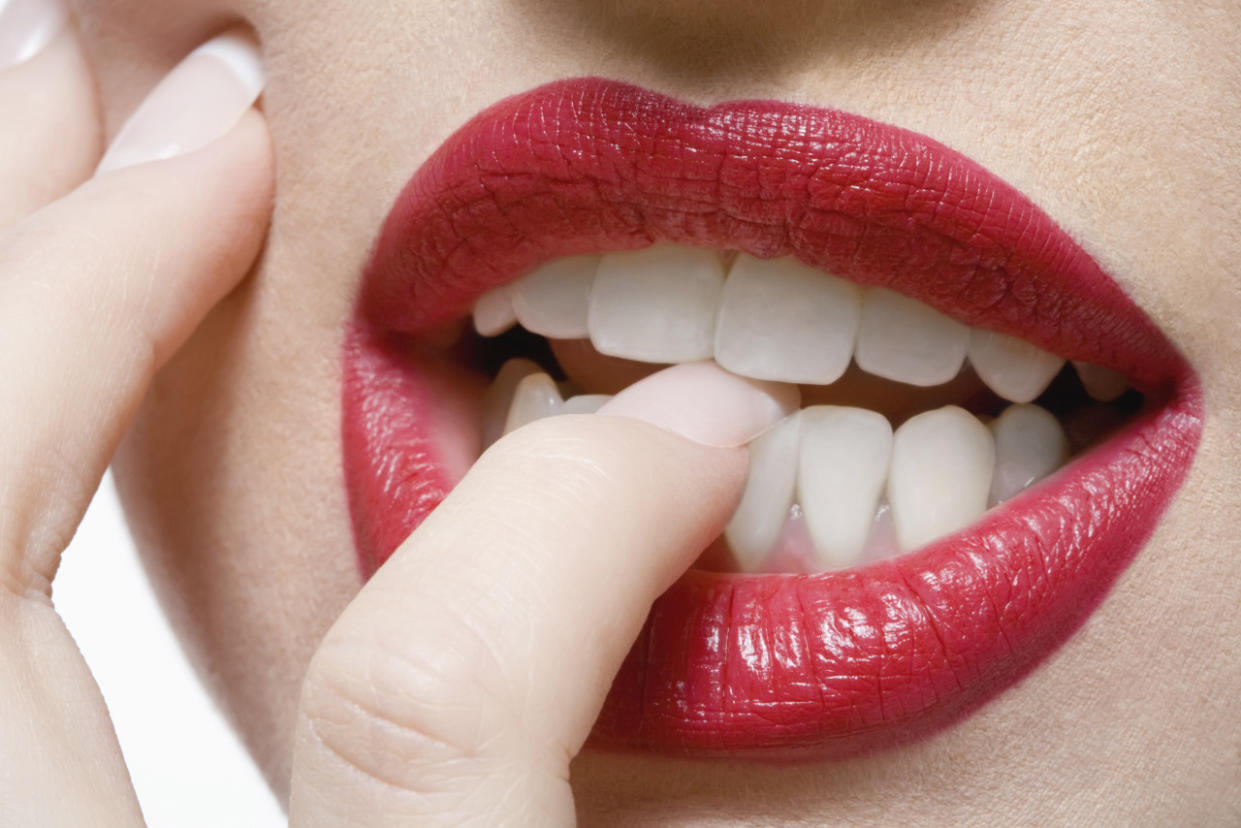9 Things to Know if You're Considering Invisalign

Sick of that overbite you’ve had since you were a kid? (Photo: Getty Images)
You know you’ve seen the commercials: Someone is self-conscious about their teeth-baring smile, but then they get Invisalign…and suddenly they’re grinning like a maniac. Experts agree that it can seriously straighten your teeth, and that’s why a lot of people really like it, says Kristen Berning, a dentist and Invisalign provider at Exceptional Dentistry of the Tri-State Region in Dubuque, Iowa. The process involves a series of clear, plastic aligners, each worn for two weeks, that gradually shift your teeth. So could it be an option for you? Here’s what you need to know.
1. Almost Everyone Is a Candidate
Want to fix that overbite? Most people can use Invisalign, say dentists. But you should be extra-careful and consult your dental or orthodontic professional if you have a history of gum problems, loose teeth, or Temporomandibular Joint Disorder, a condition that causes pain in the jaw. Other than that, the teeth in most healthy teen and adults can be successfully adjusted through the process, which can take anywhere from four months to a few years. However….
2. In Some Cases, Braces Might Be a Better Choice
Invisalign aligners are clear, a huge plus for those of us mortified by the prospect of metal brackets on our teeth. The process can also work faster than traditional braces because the trays cover the entire tooth, not just the front part, potentially moving things along at a higher clip. That being said, for serious overcrowding or very twisted teeth, traditional braces may still prove the better fix. Both options can cause soreness, but experts agree that Invisalign is generally more comfortable because there aren’t wires potentially poking your cheeks.
3. A Dentist or an Orthodontist Can Treat You
Both can provide Invisalign, even though it’s technically an orthodontic procedure. One thing to consider: the severity of the corrections you’re looking into. Who you see “depends how difficult the complexity is,“ says Emmanuel Layliev, a dentist at the New York Center for Cosmetic Dentistry. If you’ve got major teeth crowding, for example, it may be beneficial to pair up with an orthodontistto make sure the results are up to par.
4. Your Insurance May Cover Part of the Costs
First things first: Put in a call to your insurance company to see if they cover the procedure before you agree to shell out major dough. If you have orthodontic insurance, it should be at least partially covered. The process can run anywhere from $2,000 to $6,900. An I-stopped-wearing-my-retainer-after-a-middle-school-eternity-in-braces fix is going to run less than other, more severe cases, mostly because of the time you’ll spend wearing the trays. If your insurance won’t pick up part of the check, it’s worth looking into financing options to find an interest-free way to spread out the payments.
5. You Should Make Sure Your Teeth Are in Tip-Top Shape
Even if you decide to go through the Invisalign process with an orthodontist, a trip to the dentist is in order first. Make sure you have any pesky cavities filled before you start—if you have cavities taken care of mid-way through, it’s possible the liners won’t fit well, and your results could suffer.
6. It’s a Major Time Commitment
You’ll have to wear the clear retainers for 20 to 22 hours per day. "It’s important people will be responsible,” says Berning. If you don’t think you’ll remember or actually keep the trays in for that long, then straight-up braces may be a better fit for you.
7. There’s a Way to Make the Process Go Faster
Meet AcceleDent, an FDA-cleared medical device that helps speed up tooth movement by as much as 50 percent. Using AcceleDent means that you’ll only have to wear each tray for about one week instead of two. Plus, the process can help reduce discomfort, says Manal Ibrahim, an orthodontist at Innovative Orthodontic Centers in Illinois. Anyone who’s been deemed a candidate for Invisalign can use AcceleDent. Just keep in mind that it can add 10 to 15 percent to the cost of your Invisalign treatment (the price ranges depending on a person’s specific needs and the orthodontic practice they go to for treatment).
8. You Can’t Eat or Drink While Wearing the Aligners
You’ll have to remove them for anything that isn’t a clear, sugar-free liquid (so everything except water). Leaving Invisalign in for a girls’ wine night or coffee date could stain the trays and make your teeth appear discolored. After eating, you need to brush and floss your teeth before putting the aligners back in.
9. You’ll Still Need a Retainer
After the process is complete, you’ll get four sets of Vivera retainers, which will keep your teeth straight. For the first three months, you should be wearing them all day every day. After that, it’s okay to wear them just at night. The set of retainers lasts for four or five years. Luckily, Invisalign stores a model of your final result online, so as long as your teeth stay put, it shouldn’t be a problem to reorder retainers when the time comes.
More from Women’s Health:
7 Teeth-Whitening Treatments, Ranked in Order of Effectiveness
5 Ways You’re Brushing Your Teeth Wrong

